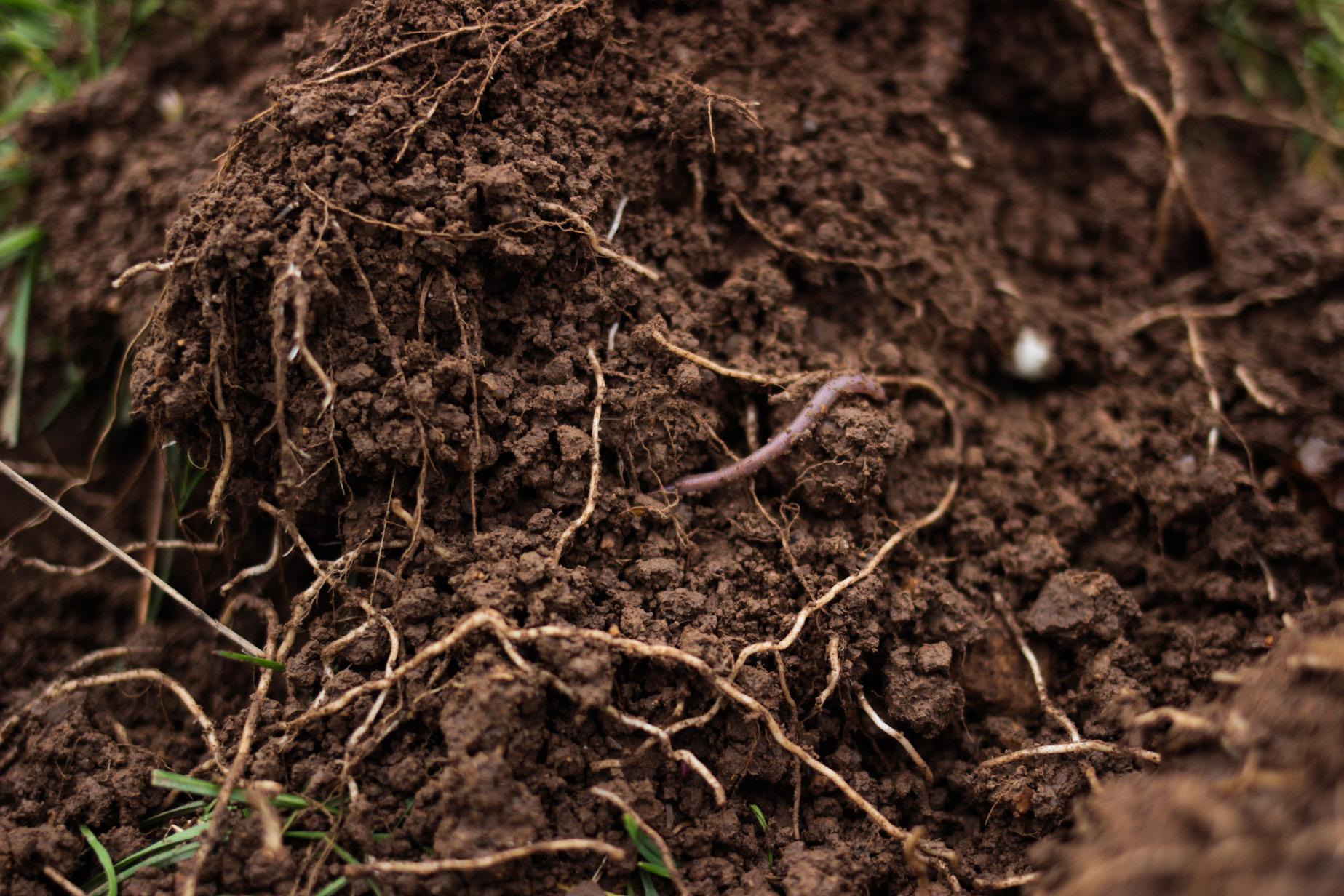

Simple Steps to Managing Soil Sustainably on Farm
An Integrated Farm Management Guidebook.
Who are LEAF (Linking Environment And Farming)?
Who are LEAF (Linking Environment And Farming)?
We are a charity that promotes and supports more sustainable farming to create a resilient food and farming system for future generations.
We are a charity that promotes and supports more sustainable farming to create a resilient food and farming system for future generations.


This guidebook is kindly supported by Waitrose & Partners, as part of the Farming For Nature programme.
This guidebook is kindly supported by Waitrose, as part of their Farming For Nature project.
We connect.
We connect.
We connect farmers, innovators and industry to understand best practice sustainable farm management and how it can be applied most effectively to each farm’s unique situation.
We build trust.
We connect farmers, innovators and industry to understand best practice sustainable farm management and how it can be applied most effectively to each farm’s unique situation.
We build trust.
We provide assurance that growers are farming more sustainably through our independently audited LEAF Marque certification; from the health of their soils to how they engage with local communities.
We educate.
We provide assurance that growers are farming more sustainably through our independently audited LEAF Marque certification; from the health of their soils to how they engage with local communities.
We educate.
Our team of qualified educational specialists work with schools, citizens and farmers across the UK to bring sustainable farming to life, both in schools and on-farm.
Our team of qualified educational specialists work with schools, citizens and farmers across the UK to bring sustainable farming to life, both in schools and on-farm.


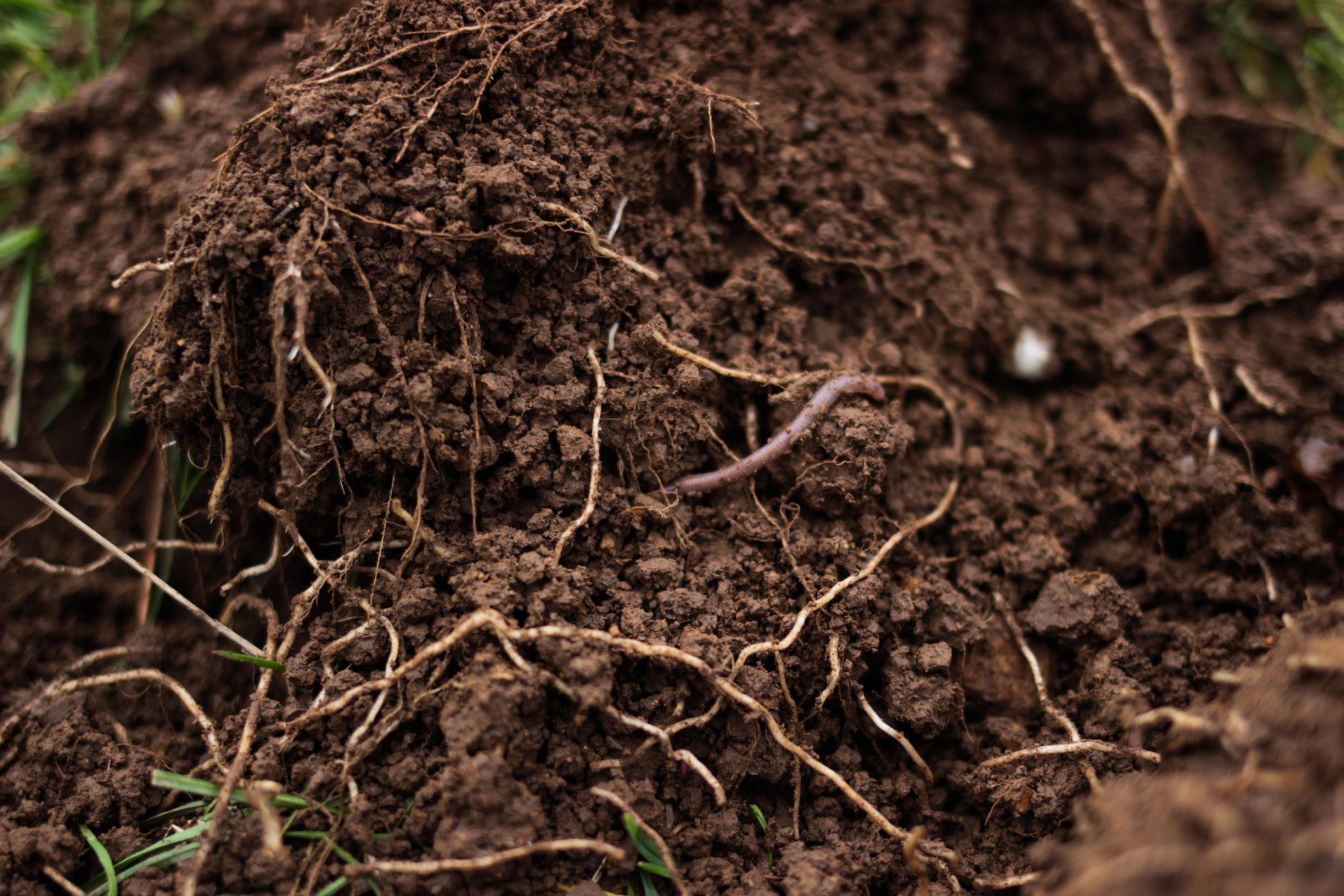

Integrated Farm Management (IFM).
Integrated Farm Management (IFM) is a holistic, farm businessspecific approach to farm management that aims to enhance sustainability across economic, environmental, and social elements of your business. It provides a structured framework for assessing and improving farm management practices.
‘Business-specific’ means that every business will approach IFM in a unique way. This will depend on many factors, including the farming system, products you produce, where you are in the world, the resources you have available and your own specific business goals.
IFM is made up of nine interrelated sections which, together help farmers implement more resilient and sustainable farming practices and outcomes. An understanding of the importance of each section and how they connect is essential for effective implementation of IFM.
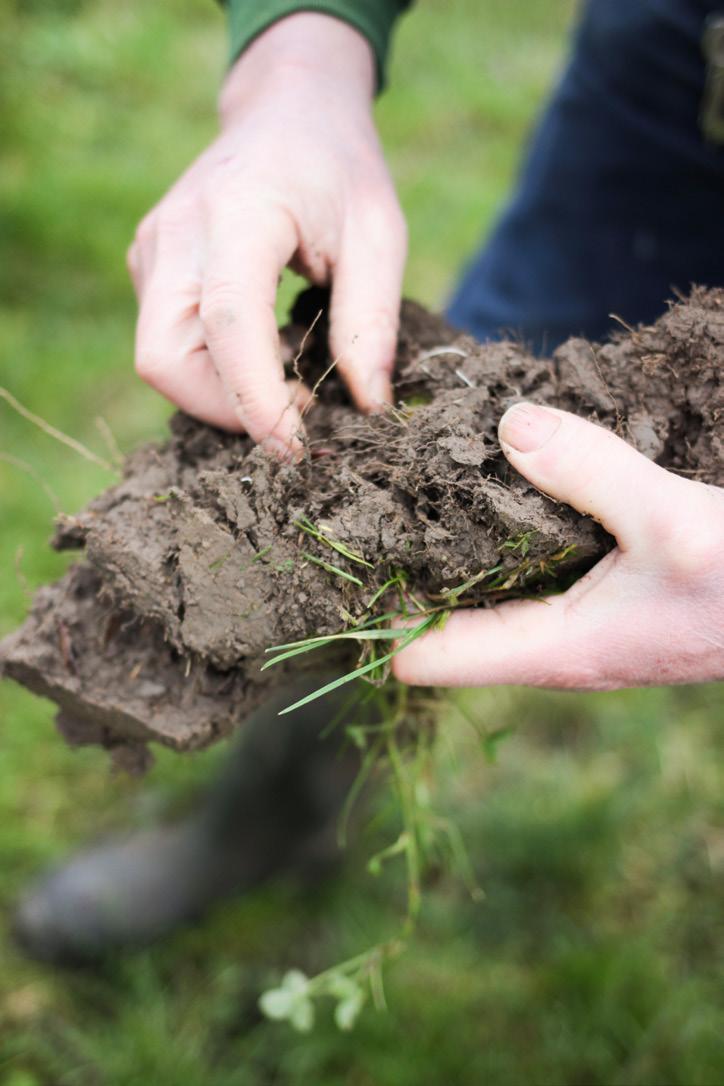
DRIVINGCIRCULAR AGRICULTURE

CLIMATE+ NATURE +





























Farm









DRIVINGCIRCULAR AGRICULTURE ECONOMY+ SOCIETY +
Benefits of IFM.
Implementing IFM can lead to enhanced business outcomes, for example cost savings on energy, reduced inputs, improved resilience and adaptability in extreme climate conditions and improved relationships with your local community and fellow business owners. By supporting the continuous improvement of practices across the farm, IFM enables farmers to adapt to evolving climate change challenges whilst optimising productivity.
Understanding your soil.
Gaining a better understanding of your soil health and properties will help to improve overall farm performance, enable you to track changes and support the long-term sustainability of your business.
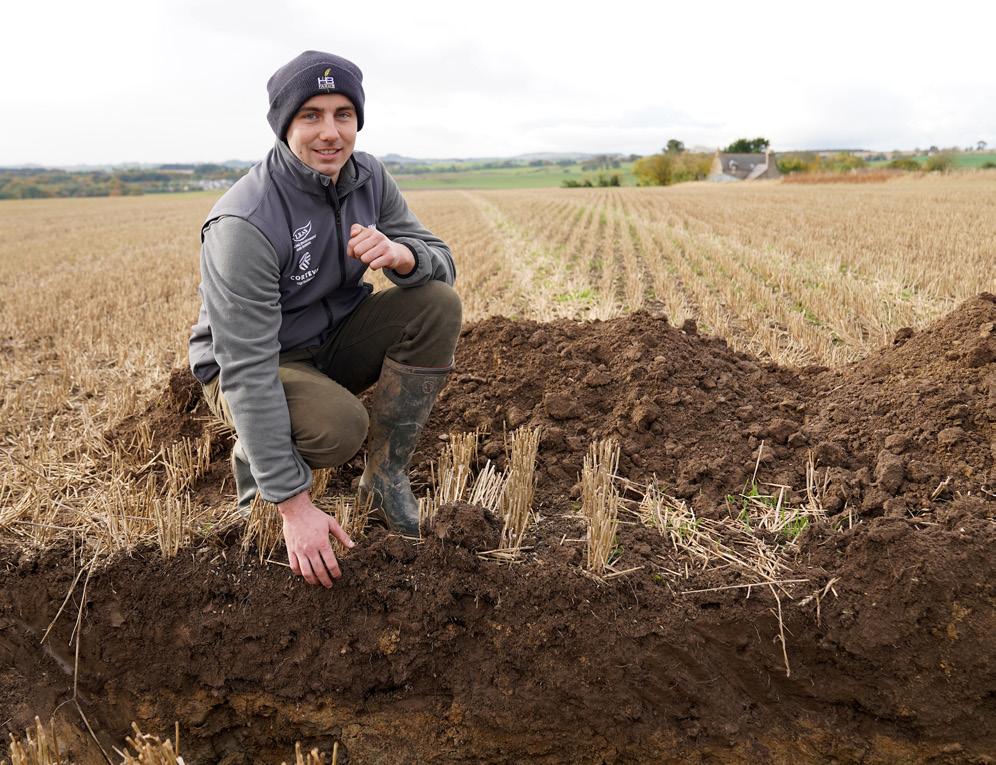
A healthy soil.
Healthy soil helps regulate soil erosion and storage of water, soil temperature, respiration and development, and nutrient cycling.
Properties of healthy soil depend on soil type. However, in general, healthy soil:
▷ Drains well and warms up quickly in the spring
▷ Does not crust or cap after planting
▷ Soaks up heavy rains with little runoff
▷ Stores moisture for drought periods
▷ Has few clods and no hardpan
▷ Resists erosion and nutrient loss
▷ Supports healthy populations of soil organisms
▷ Has a rich, earthy smell
▷ Produces healthy, quality crops and grass that meet the requirements of target levels of production and market specifications is easy to work in a range of conditions
The proportion of sand, silt, or clay in a soil defines its texture, which can vary within the soil profile. Ideal soil is composed of a balanced mixture of mineral particles, organic matter, water, and air. Typically, healthy soil contains about 45% minerals (a blend of sand, silt, and clay), 25% water, 25% air, and 5% organic matter. This balance supports plant growth, nutrient availability, and microbial health. However, achieving these exact proportions can be challenging in all soil types, as factors like texture and climate vary. According to the USDA Natural Resources Conservation Service, while these percentages are an ideal benchmark, soil composition can fluctuate based on local conditions and soil management practices.

Soil texture influences both drainage and nutrient availability: sandy soil drains quickly but struggles to retain water and nutrients, whilst clay soil holds onto water and nutrients tightly but can have poor drainage. Understanding your soil allows you to choose crops suited to its characteristics and manage water effectively to ensure optimal growth. The workability of your soil will also be determined by its texture - how easy the soil is to cultivate and how resilient it is to structural damage.
As a first step to understanding the properties of your soil, collect samples from a field that demonstrates high productivity and low complexity, as well as a field that presents significant challenges and low productivity. Record and map your results to build-up a long-term picture of how your soil is improving and where possible, take photographs of those areas prone to erosion, compaction and poaching.
Assessing soil texture:
Gather a sample: Take about a dessert spoonful of
Moisten the soil (if dry): Gradually add water and knead the soil between your thumb and fingers until the soil crumbs break down.
Moisture level is key: Add just enough water so the soil holds its shape but feels very sticky. Aim for maximum stickiness without the soil becoming
Once you have a moist sample, follow the steps in figure 1 to identify your soil texture class.
Figure 1: Determine the texture of your soil.
Is the moist soil predominantly rough and gritty?
Does soil mould to form an easily deformed ball and feel smooth and silky (buttery)? Does soil mould to form a strong ball which smears but does not take a polish?
Does the soil stain the fingers?
Is it difficult to roll soil into a ball?
Does soil feel smooth and silky as well as gritty?
Is soil also rough and gritty?
Is soil also smooth and silky?
Does soil mould like plasticine, polish and feel very sticky when wet?
Is soil also rough and gritty? Is soil also smooth and silky?
Cation exchange capacity is highly influenced by soil texture, increasing with the proportion of clay. It is an indication of the ability of the soil to retain several nutrients in a form available to plants. Clay also helps to stabilise organic matter in soil. Several on-line soil texture maps are available, including Land Information System Soilscapes Viewer provided by Cranfield University.
Sandy loam
Sandy silt loam
Silt loam
Clay loam
Sandy clay loam
Silty clay loam
Clay
Sandy clay
Silty clay
Physical health. Step 1: Assess & improve soil structure.
Soil structure is the framework of the soil. It is usually described in terms of the size, shape and stability of the units - known as aggregates, crumbs, blocks or peds - in which the particles - sand, silt, clay and organic matter - of the soil are held together.
Knowing the size, shape and arrangement of aggregates and air spaces is important to maximise the potential for aeration, drainage and root development. Good soil structure consists of well-formed aggregates, that are easily broken between the fingers when moist. Vertical fissures lead roots downwards and the soil is structurally stable. Poor soil structure is characterised by hard and sharp-edged aggregates, which are more difficult to break apart.
There are two tests for assessing soil structure. The Quick Test is recommended for all fields and the Visual Soil Assessment is a more detailed test for your best and worst fields.


Quick test:
Dig a small soil pit (40cm by 40cm, by 50cm deep).
Lift out a section of soil and examine it. Assess:
Topsoil depth
Generally shallower under permanent pasture than cultivated soil.
Colour
Soils rich in organic matter typically have a dark brown or black colour due to the presence of decomposed organic matter. Rusty, grey mottles can indicate poor drainage and previous waterlogging.
Smell
Waterlogged, anaerobic conditions prevent break down of organic matter and manures, denoted by a foul smell.
Roots
Deeper roots suggest healthier soil with good drainage and nutrients. The ideal depth for healthy root growth depends on plant type, climate, and soil characteristics.
Cracks, pores and burrows
Look for clear vertical channels between blocks that allow movement of water, air and nutrients.
Visual Soil Assessment (VSA).
The VSA is based on key soil conditions and plant performance indicators of soil condition, presented on a scorecard. Soil condition is ranked by assessment of the soil indicators alone, it does not require field history knowledge. Plant indicators, however, require knowledge of immediate crop and field history. (To carry out a full soil and plant performance assessment download the Visual Soil Assessment by Väderstad & SMI).
Soil condition should be assessed using a visual score of 0 (poor), 1 (moderate), or 2 (good), based on the condition observed when comparing the field sample with the three photographs on page 17 (Figure 2). The scoring is flexible, so if the sample you assess does not clearly align with any one of the photographs and sits between two, a score can be given, for example, 0.5 or 1.5.

1. Getting prepared.
You will need:
A plastic bowl (approx. 35 cm by 35 cm by 20 cm deep)
A heavy-duty plastic bag
VSA photographs (Figure 2)
A notebook & pencil or electronic recording device
2. When to carry out the assessment.
For arable cropping, ideally carry out the assessment in spring when the soil is moist or after harvest and before cultivation. Also, a second test after the final cultivation to check the condition of the seedbed.
For grassland, ideally in spring or after the final silage/hay cut and before any cultivations.
The VSA should be carried out when the soil is at the correct moisture content for cultivation or is sufficiently dry to prevent compaction by wheeled traffic. Additionally, the soil should be checked down to the depth of cultivation to ensure the best results. Different crops, such as grass and potatoes, will require different decision-making approaches, as they present extremes in terms of soil needs.
If you are not sure when to sample, apply the ‘worm test’. Roll a ‘worm’ of soil on the palm of one hand with the fingers of the other until it is 50mm long and 4mm thick. If the soil cracks before the worm is made, or you cannot form a worm (e.g. if the soil is sandy), the soil is suitable for testing. If you can make the worm, the soil is too wet for testing. It is important to only test soils when conditions are comparable to the last time you tested. Different weather patterns can cause significant differences in soil properties from
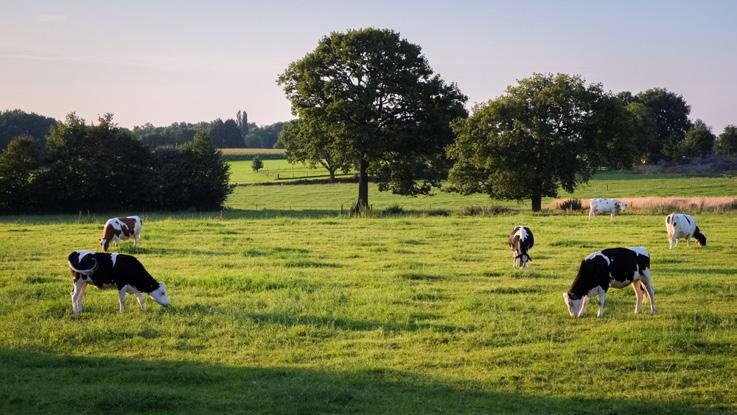
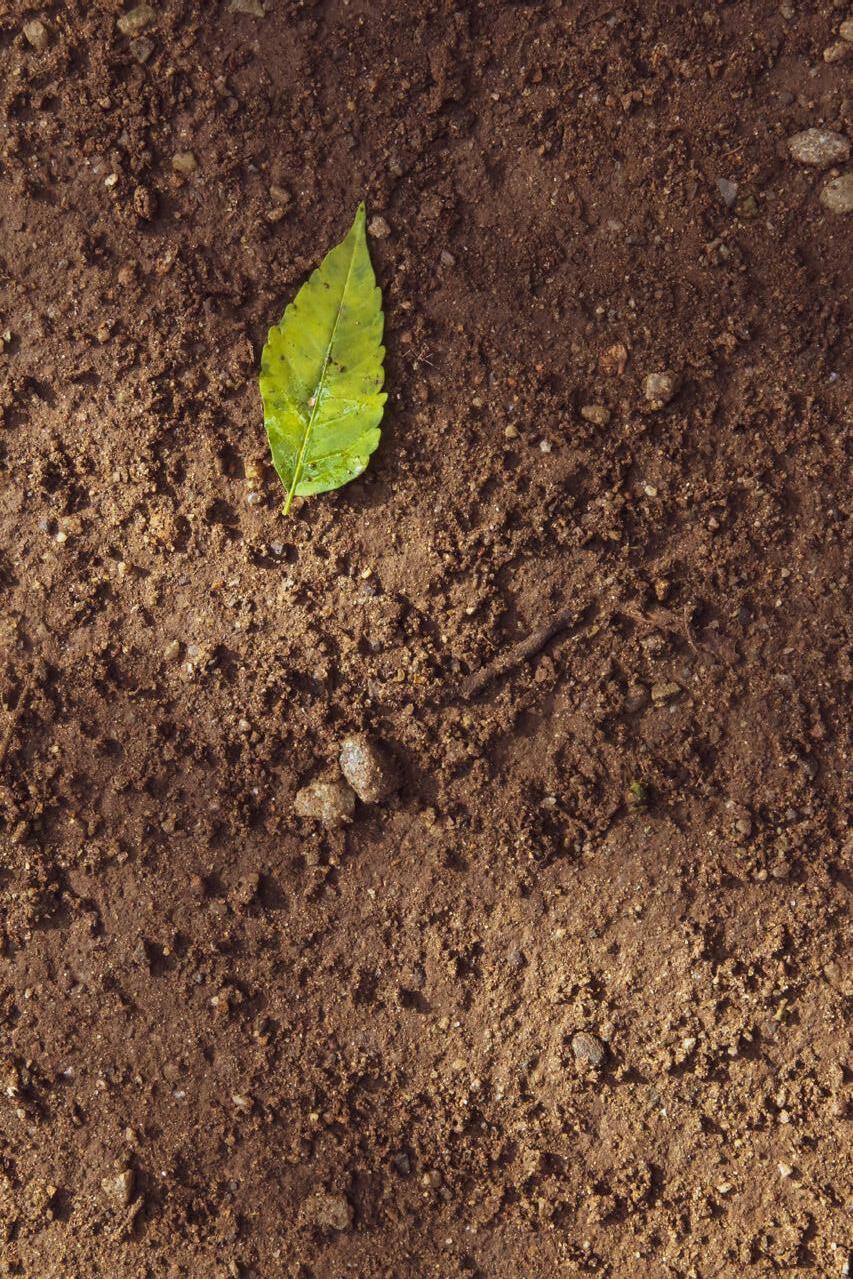
3. Setting up.
Allow about half to one hour per field. The assessment process takes about 10-15 minutes for each sample, and you should sample three or four sites in each field.
Avoid areas such as headlands or loading areas, which may have had heavier traffic than the rest of the field (VSA can also be used, however, to assess the effects of high traffic loading on soil
It is useful to record the GPS location of where you carry out the assessments, so you can return there for future monitoring.
4. Carrying out the drop shatter test.
Take a test sample. Dig out a 20cm cube of topsoil with a spade. If the topsoil is less than 20cm deep, take off the subsoil before moving to the next
Drop your sample three times from a height of 1m (waist height), into the plastic basin. Lay the soil out on the large plastic bag, grading the pieces so that the coarsest clods are at one end and the finest aggregates at the other end. This provides a measure of aggregate size and distribution.
Compare the resulting distribution of aggregates with the three photographs in Figure 2.
Figure 2: Typical distribution of aggregates in cropped and grassland.
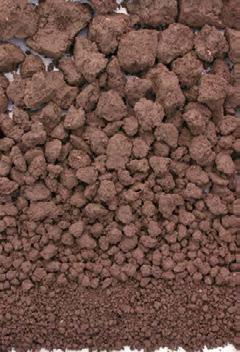
Poor Condition (0)
Soil dominated by extremely coarse; very firm clods with very few finer aggregates.
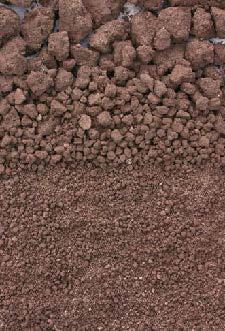
Moderate Condition (1)
Soil contains significant proportions of both coarse firm clods and friable, fine aggregates.
Väderstad & SMI - Your Guide to Visual Soil Assessments
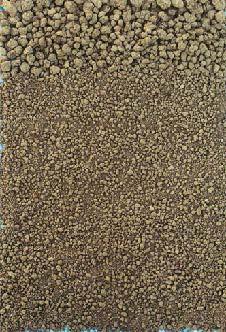
Good Condition (2)
Good distribution of finer aggregates with no significant clodding.
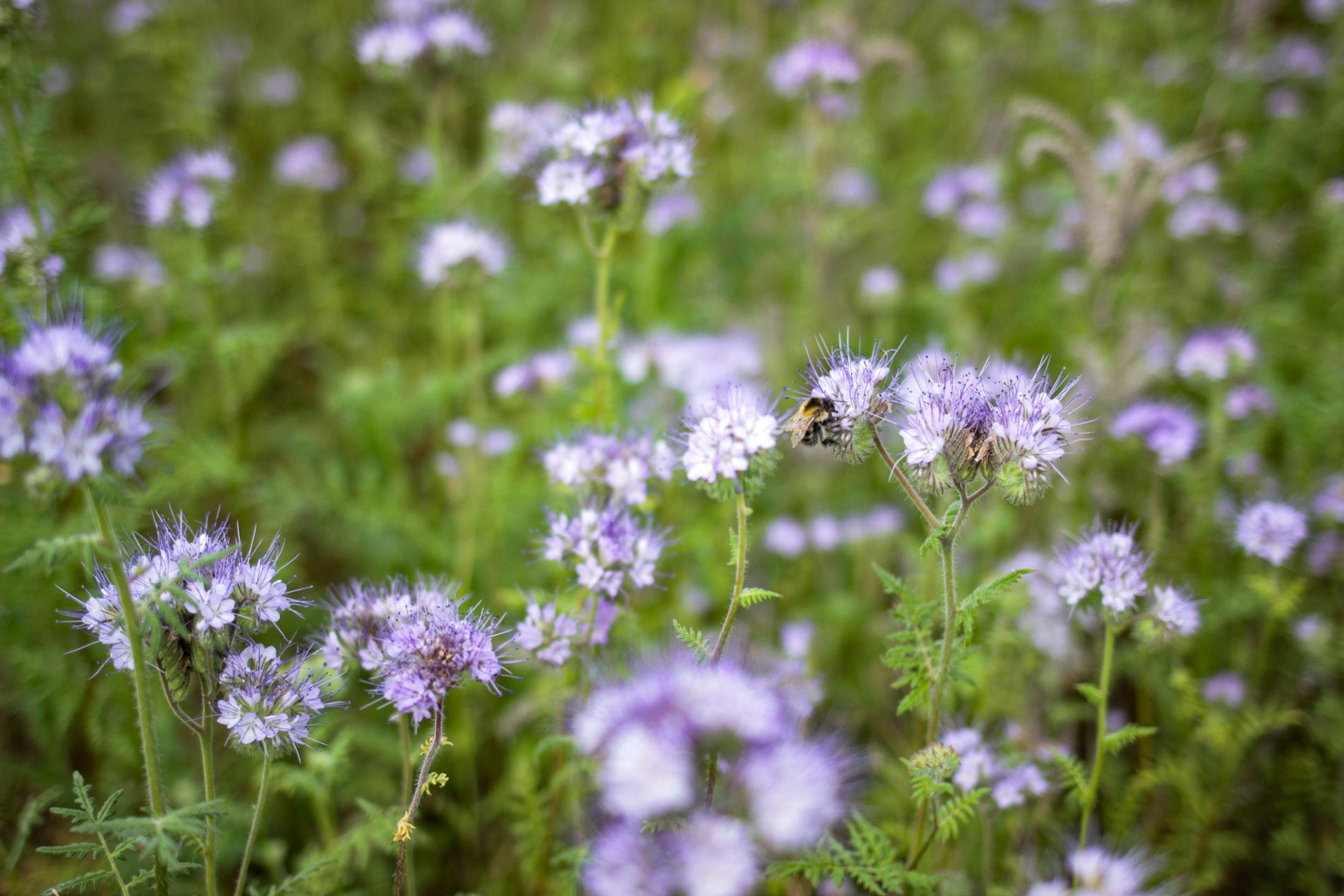

Case study. Varfell Farms.
Varfell Farms is located in Cornwall (UK) and covers 1,800 hectares of land, with 1,100 of those hectares cultivating cut flower daffodils. An additional 20 hectares is dedicated to agapanthus, with winter barley also being grown, primarily as a cover crop.
Varfell are a LEAF Demonstration Farm, and have been LEAF Marque certified since 2012. They are the world’s largest grower and packer of daffodils and one of the UK’s largest agri-business firms, supplying blooms and bulbs to multiple UK and European retailers.
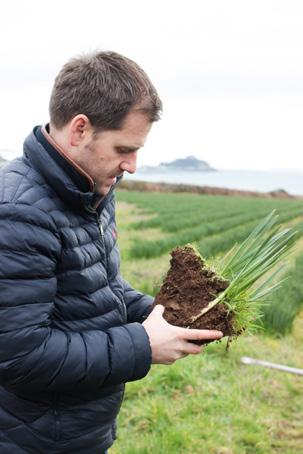
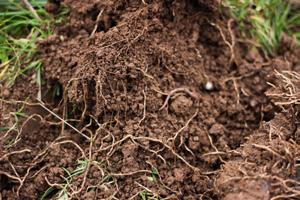

Simon Gardner, Farms Director.
Varfell is committed to regenerative farming practices that prioritise soil health, recognising it as a key factor in sustaining both productivity and environmental stewardship. The farm's approach to soil management focuses on enhancing soil structure and resilience, whilst reducing reliance on artificial inputs.
A 10-year crop rotation.
A central component of Varfell’s soil health strategy is their diverse 10year crop rotation, featuring over eight different plant species including daffodils, buckwheat, brassica vegetables, cereals, phacelia and others.
To further enhance soil fertility, manure and compost are applied before cereal crops, and cover crops are planted between cash crops to maintain soil health and structure.
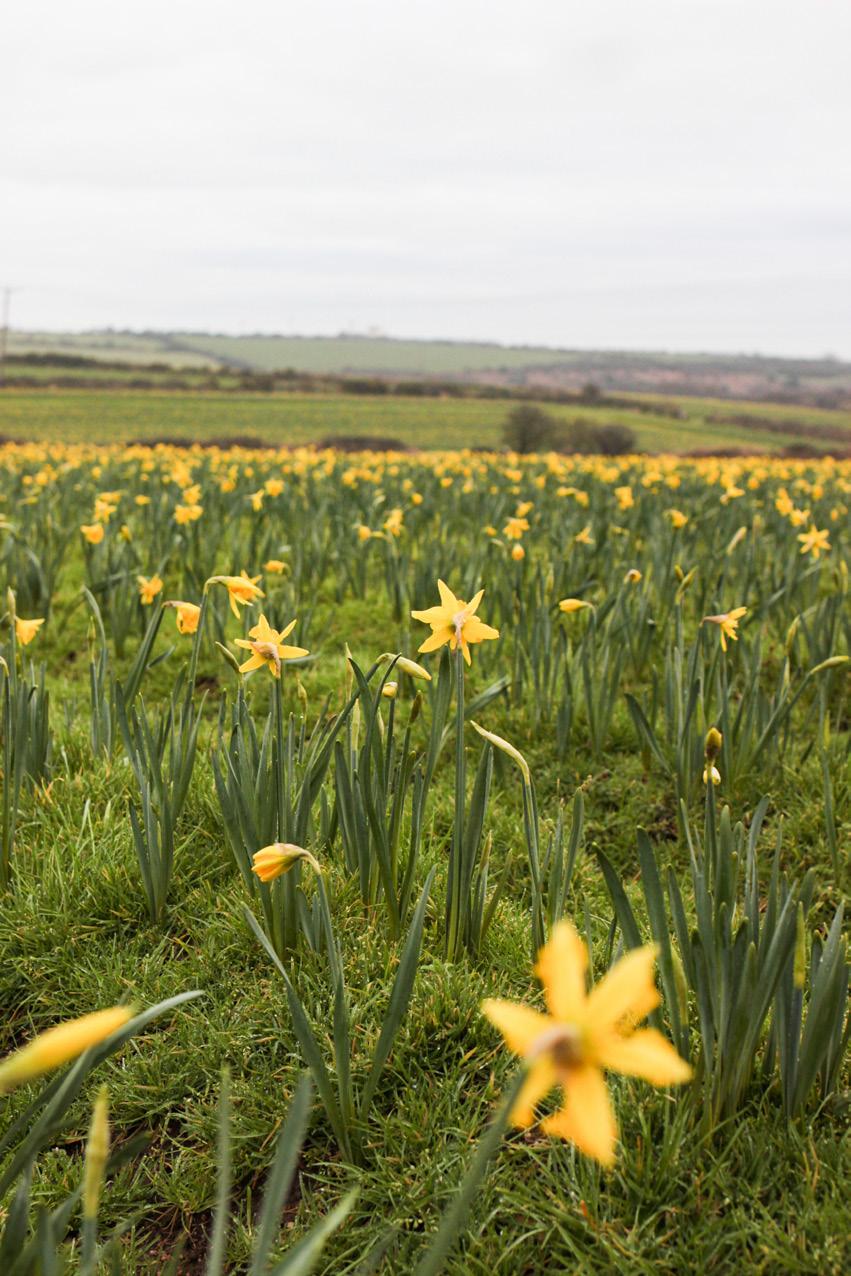
Protecting the soil.
Minimising soil disturbance is a key priority for Varfell, with reduced tillage practices protecting essential soil microbes and fungi, which are critical to long-term soil health. To safeguard the soil, Varfell employs direct drilling methods which reduce erosion and preserves organic matter. This low-disturbance approach helps maintain the soil’s natural structure and minimises damage from heavy machinery.
Controlled traffic farming is another important technique used at Varfell to protect the soil. By restricting vehicle movement to specific tracks, the farm minimises soil compaction, improving water infiltration, root growth, and overall soil structure.
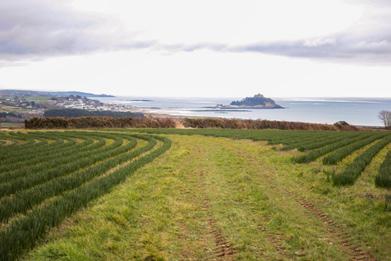

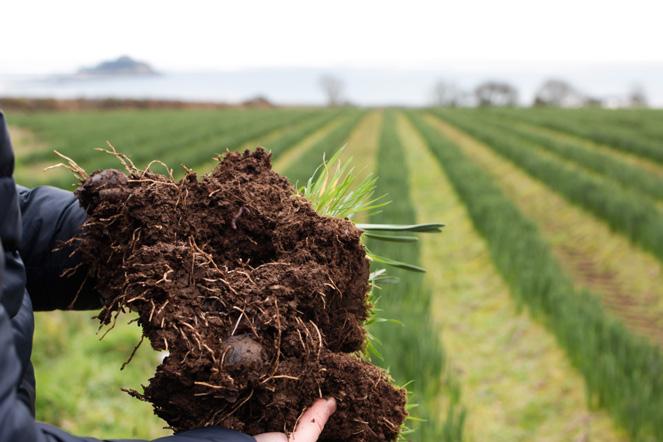
Case study: Varfell Farms.
Reducing artificial inputs.
Varfell’s regenerative farming practices focus on increasing biological soil activity by enriching the soil ecosystem. This is achieved through the use of locally produced nutrients and imported pre-digested nutrients, such as compost and farmyard manure.
Agrochemical usage is carefully managed to ensure minimal impact on the soil. Varfell invests in independent advice and develops in-house expertise to guide the application of agrochemicals. By focusing on precise application methods and closely monitoring chemical residues, the farm reduces its reliance on agrochemicals. Decisions on chemical treatments are guided by weather stations and disease models, ensuring chemicals are only used when absolutely necessary, thus protecting soil health.
Biodiversity plays a crucial role in Varfell's pest management strategy. The farm strategically designs “biodiverse islands” to attract natural predators, reducing the need for chemical pest control. In addition, careful planning of planting patterns and the use of herbivores to control cover crops further minimises synthetic inputs and promotes healthy soil structure. Varfell also adopts precision farming techniques, such as GPS planting and the use of Cropwise technology, to optimise input usage, reduce waste, and enhance crop yields. This precision enables the farm to maximise productivity while minimising environmental impact.
Soil,
the foundation to long-term success.
At Varfell, regenerative farming is viewed as the foundation for longterm success. Through its focus on soil health, biodiversity, and precision farming, the farm enhances soil structure and resilience while reducing the use of artificial inputs.
Step 2: Improve soil drainage.
A well-drained soil means water can pass through easily and the soil avoids becoming waterlogged (anaerobic). Check for areas where water is lying on the surface, poaching problems are evident and erosion has occurred.
The colour of the soil is a useful indication of soil drainage, aeration, soil wetness from late autumn to early spring, and soil damage.
Warm, uniform, brown and black = good drainage
Grey mottles = potential drainage issues
Grey soil colours, due to reduced forms of manganese and iron in the topsoil indicate the soil is waterlogged and deficient of oxygen for long periods. This poor aeration leads to a build-up of carbon dioxide and methane and reduces the ability of plants to take up oxygen, water and nutrients, particularly nitrogen, phosphorus and potassium. Poor aeration also slows the breakdown of organic residues and can induce chemical reactions toxic to plant roots.
Figure 3: Visual scoring of soil colour.
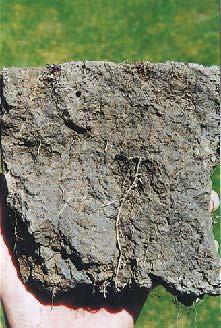
Poor Condition
(0)
Soil colour has become significantly paler due to gleying because of persistent poaching.
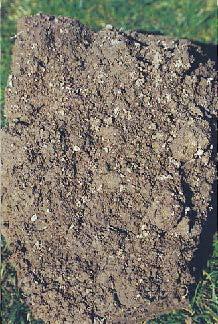
Moderate Condition
(1)
The colour of the topsoil is somewhat paler due to the early stages of gleying because of moderate poaching.
Väderstad & SMI - Your Guide to Visual Soil Assessments
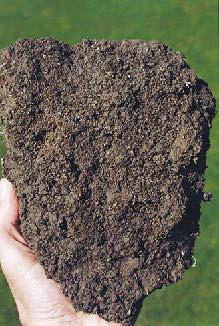
Good Condition (2)
Dark coloured topsoil indicating a well aerated soil with a good turnover of organic matter.
Soil drainage & water infiltration enhancement practices.
Healthy soil drainage and water infiltration are crucial for optimal plant growth. These processes directly impact root zone aeration, influencing nutrient availability and root respiration. Poor drainage leads to anaerobic conditions, hindering nutrient uptake and potentially leading to root rot. Conversely, excessive drainage can result in rapid leaching of essential nutrients and water stress. Therefore, ensuring a balance between drainage and infiltration is key for promoting optimal plant health and performance.
Recommendations to help improve soil drainage.
Reduce tillage & control traffic:
Minimise compaction by opting for no-tillage or minimal tillage methods. Plan the timing according to weather and designated pathways for machinery and animals. This helps preserve soil structure and the pore spaces that allow water to infiltrate efficiently. Explained in depth in step 3.
Improve soil organic matter:
Build organic matter by regularly adding compost or other organic materials like manure or incorporating cover crops. This improves soil structure by creating more pore space, allowing water to move freely through the soil profile. Explained in depth in step 4.
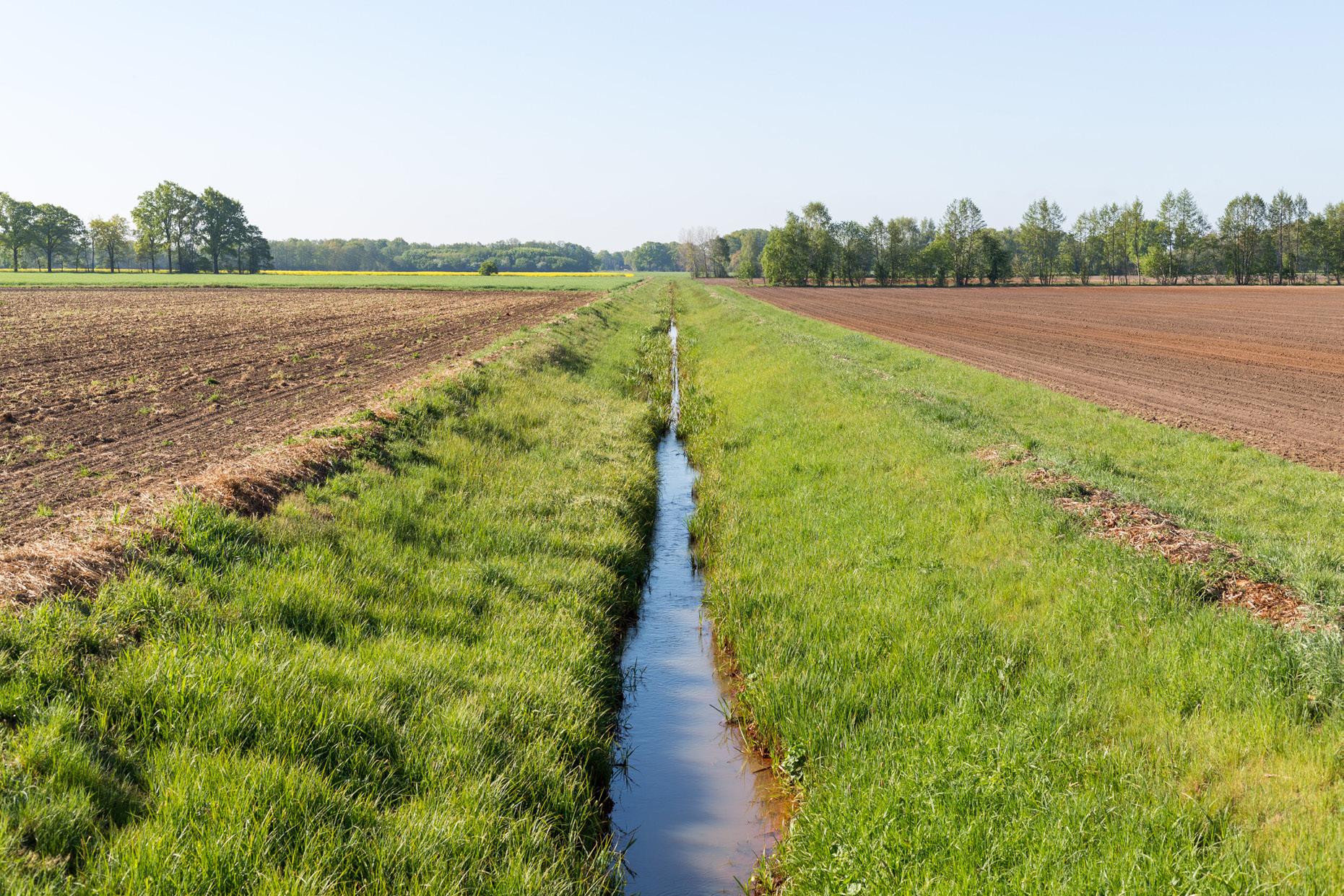

Step 3: Reduce soil compaction.
Compacted soil restricts the movement of air, water and nutrients into the soil profile. This leads to poor root growth, which stresses the plant and reduces its response to nitrogen and other nutrients, thus reducing crop yield.
To assess soil compaction, dig a hole 50cm deep when the soil is not excessively wet or dry. Look how far the roots and moisture extend down the profile and look for any obvious change in the soil structure. Where the spade meets resistance is where compaction starts - this will also help identify what the cause is and whether action is required.
Bulk density is a measure of soil compaction, with increasing values indicating greater soil compaction, and therefore impact on root growth.
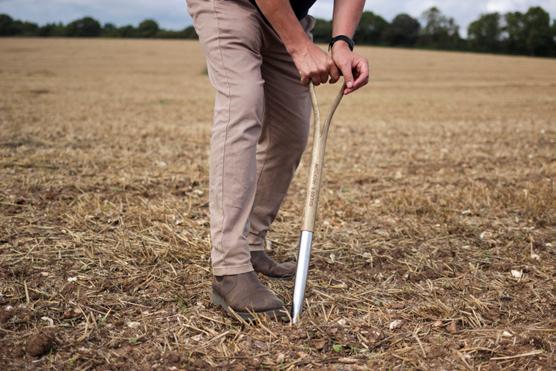
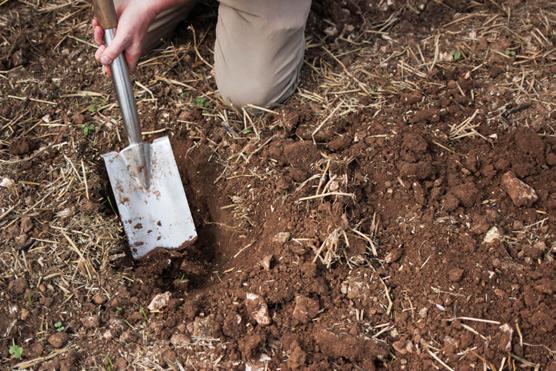




Recommendations to help reduce soil compaction.
Reduce tillage:
Excessive tillage practices break down soil aggregates, leading to compaction over time. Consider no-tillage or minimal tillage techniques to preserve soil structure and pore spaces.
Control traffic:
Plan designated pathways for machinery to avoid compacting the entire field. This can be achieved through controlled traffic farming (CTF) techniques.
Limit traffic:
Restrict animal grazing or heavy machinery use during wet periods when soil is more susceptible to compaction.
Subsoiling:
In some cases, subsoiling can be used to break up compacted layers deep within the soil profile. However, this practice should be done with caution and only after a soil test to determine its necessity and appropriate depth.
Cover crops:
Rotating crops with deep-rooted cover crops can help loosen compacted soil layers and improve access to water and nutrients.
Irrigation:
Effective irrigation helps to avoid waterlogging, which can contribute to compaction.
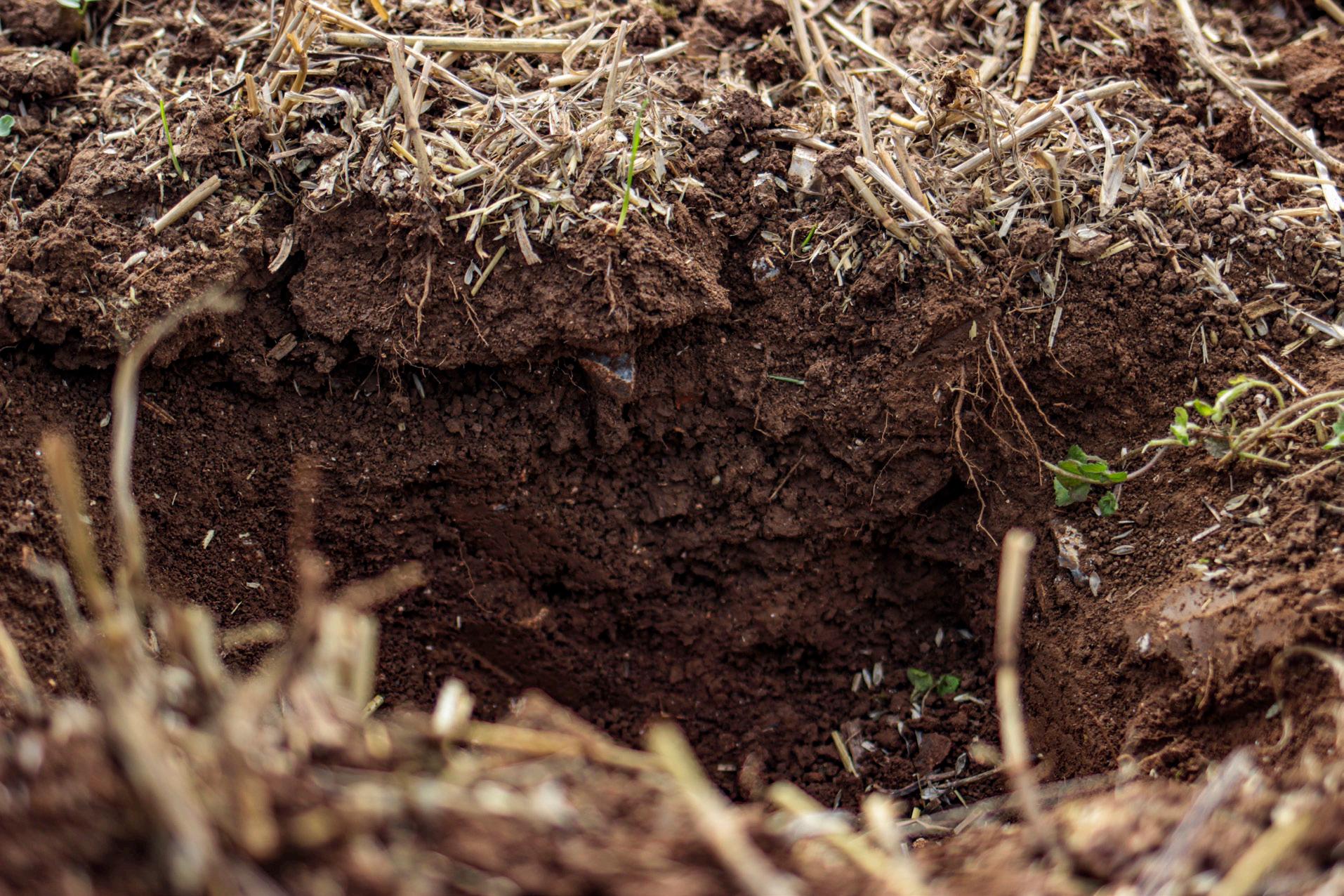

Testing SOM status can be undertaken in a laboratory and also visually. Soils that are dark brown/ black generally have ‘high’ organic matter levels and light-brown coloured soils ‘low’ levels. However, it is advisable to carry out soil tests where possible, to obtain objective results.
It is important to be consistent in your testing for SOM. For on-farm management decisions the lab test to ask for is ‘organic matter by loss on ignition (LOI)’. As long as the test is used to monitor changes over time for a specific soil type on the farm, this test is fine. (Always use the same lab, as the test is not standardised between labs). Typically, it is said that SOM is 58% carbon.
However, if an accurate calculation of absolute carbon stocks is needed, or you want to compare across different soil types, the more accurate ‘soil carbon by DUMAS’ test is appropriate. It is important to ensure that the lab method accounts for inorganic carbon as well as providing the organic carbon content (5). Both are important parts of the on-farm carbon cycle but react differently to management practices.
Recommendations to help maintain and enhance soil organic matter.
Integrate erosion control practices:
This can help prevent your topsoil from losing its ability to hold nutrients, regulate water flow, and combat pollutants. Degraded soil could require an increased rate of fertiliser application.
Integrate cover crops:
Planting cover crops during fallow periods can protect the soil surface, promotes root growth, and adds organic matter when incorporated.
Add organic materials:
Organic materials such as livestock manures, biosolids, composts, provides a slow-release source of nutrients for plants. It is suggested to apply these following a trained advisor recommendation.
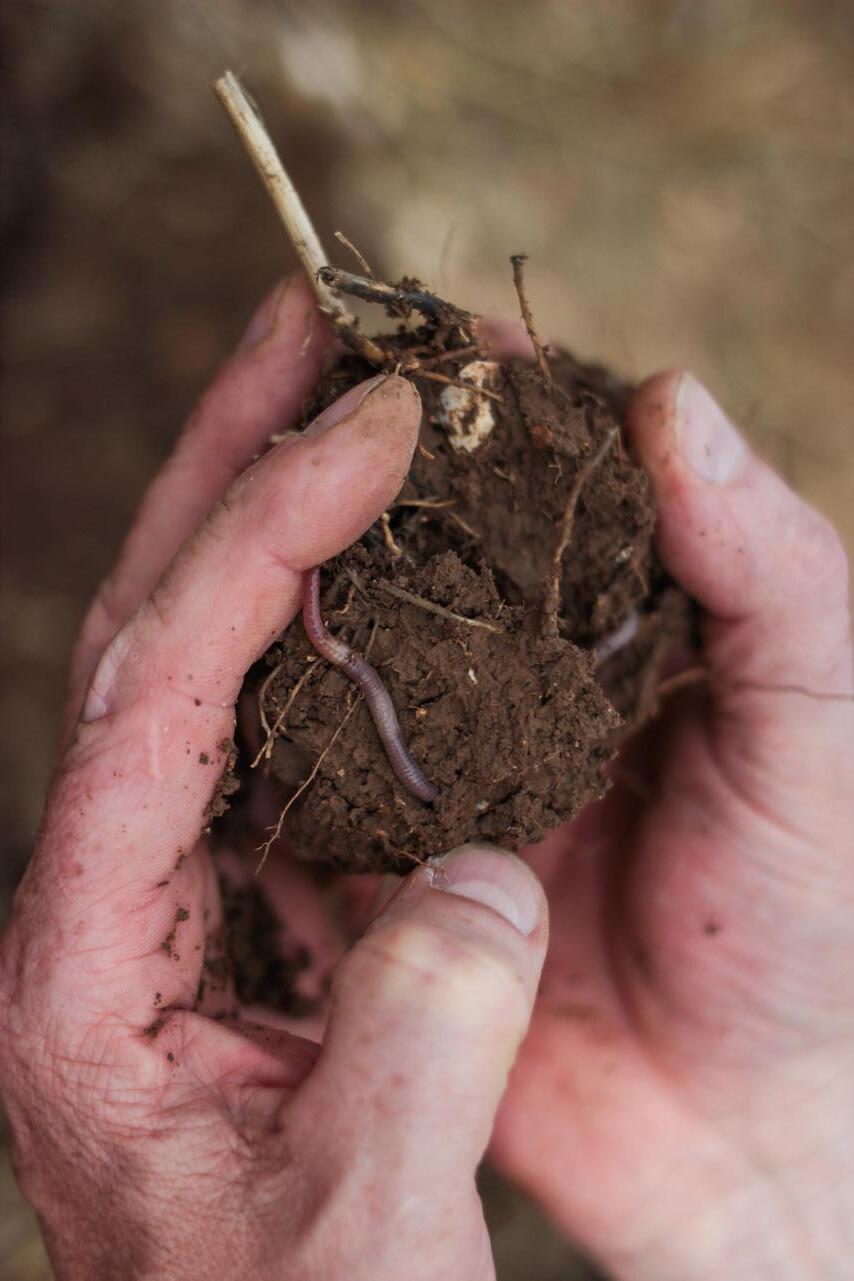

Incorporate crop residues:
Applying organic mulches like straw can help suppress weeds, retain moisture, and and adds organic matter to the soil profile over time as they decompose.
Crop rotations:
A diverse crop rotation plan incorporating crops with deep root systems helps to break up compacted soil. Their residues can contribute to SOM content when incorporated back into the soil.
Incorporate grazing livestock:
Livestock can improve soil health, biodiversity, and fertility through bioturbation (the reworking of soils and sediments by animals and plants).
Biochar:
Using biochar (a charcoal-like material produced from organic matter), can improve soil structure and potentially enhance SOM content.
Reduce tillage:
No-till or minimal tillage techniques minimise disturbance and preserve existing SOM.
Step 5: Determine soil pH & nutrient levels.
Achieving optimal plant growth requires a focus on two critical soil properties: pH and nutrient availability. The natural pH is affected by the underlying rock type of the soil, but it can also be altered by agricultural processes.
Soil pH affects the availability of nutrients in the soil and therefore crop productivity. In a wellfunctioning system (slightly acidic soils, pH 6.0-7.0), essential nutrients are readily available for plant uptake. However, deviations from this ideal range can make nutrients unavailable for crop uptake, ultimately leading to reduced plant growth.
A soil test will assess soil nutrient levels which will indicate the additional nutrients required for optimal crop growth, allowing a targeted approach to soil nutrition.
A basic soil test should provide information on levels of nitrogen, phosphorus, potassium and magnesium. What additional nutrients you test for depends on your field history and use, as well as your soil type. You could consider including calcium, sulphur, zinc and iron. Your soil testing provider will help determine the most appropriate test for your needs.
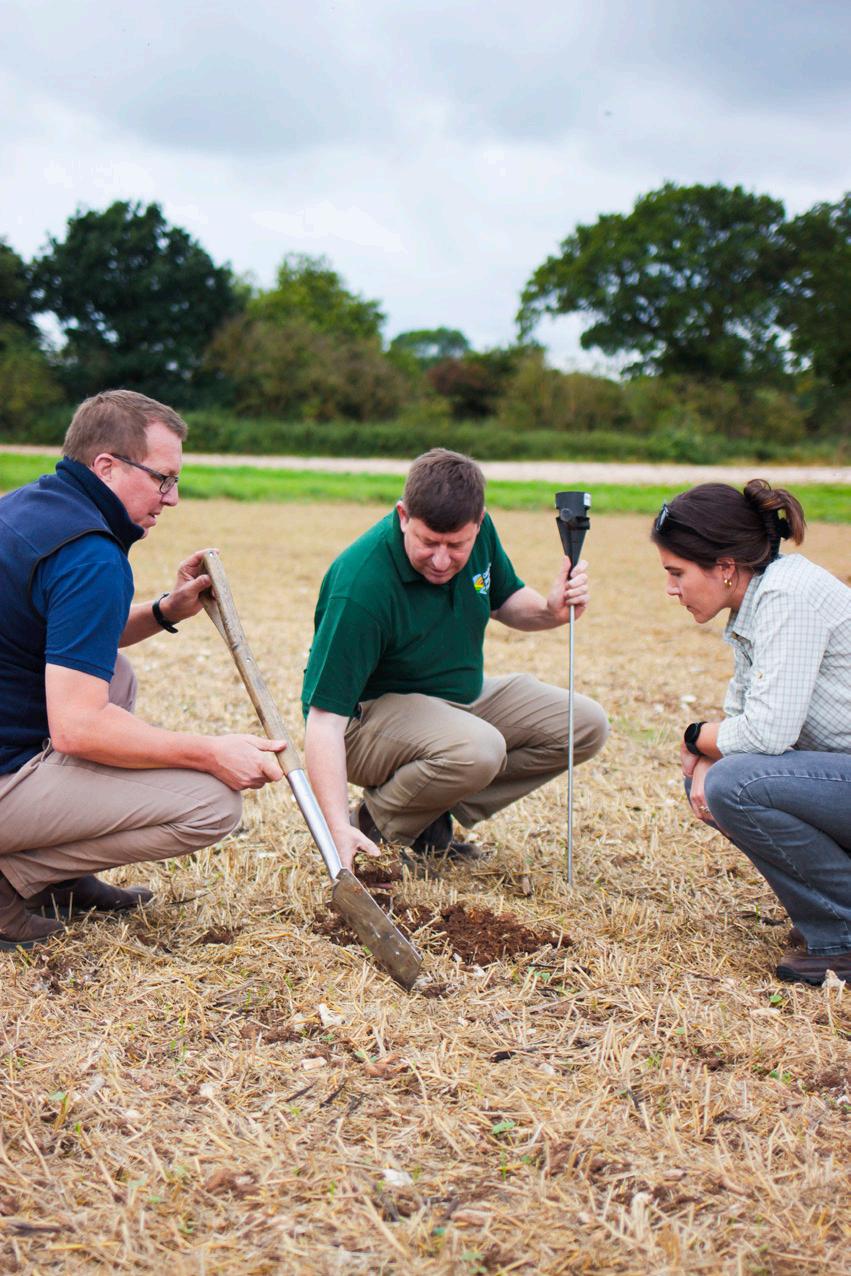

How to test for pH and nutrients.
▷ Twist a sampling auger/soil corer down to 7.5cm in grassland fields or 15cm in arable fields
▷ In a bucket, collect 25 cores of soil while walking the field in a ‘W’ shape, avoiding gateways/feeding areas
▷ Transfer a sample to a plastic bag and label
▷ Send to soil laboratory
Where there are different soil types you may choose to send multiple samples for analysis. Sample every three to five years and not within 6 months of manure, fertiliser or lime application. Quick soil pH test kits are also readily available.
Using the chart below you can build up a picture of your best fields and identify problem areas on the farm through ‘scoring’ your soil health.
pH of soil 4 5 6 7 8 increased acidity neutral alkaline optimum for arable crops optimum for grassland
Traditionally, if there are deficiencies in soil nutrients, fertilisers are used to raise their levels. Artificial fertilisers currently maintain global crop yields but can damage the environment and are very expensive for a farm business. If used inappropriately, they can have adverse impacts on water quality through leaching, air quality through ammonia emissions, and climate change through nitrous oxide emissions. Reducing artificial fertiliser use can significantly lower your business costs, and help minimise environmental impacts, reducing farm emissions and helping progress towards net zero.
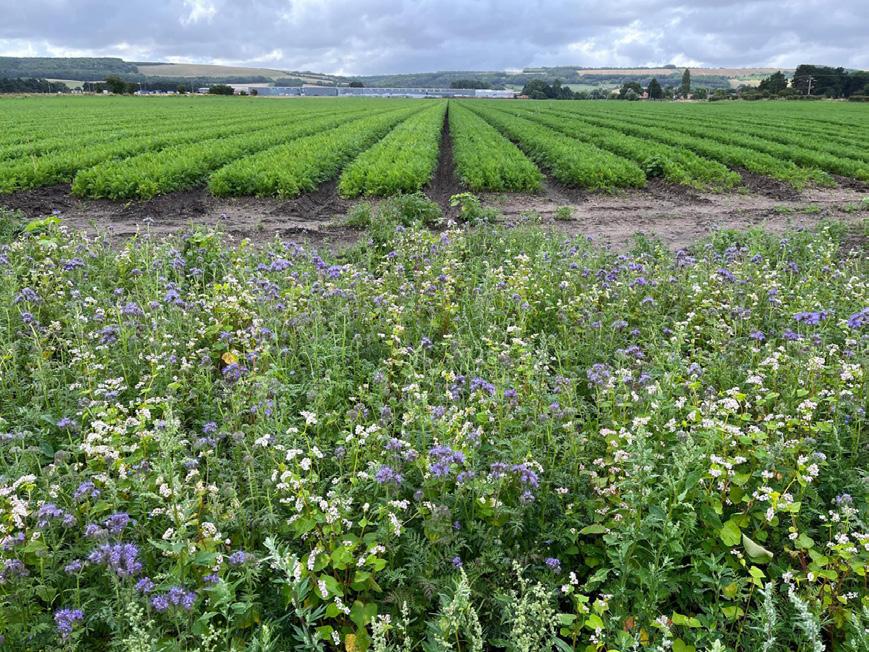
Recommendations to increase nutrient efficiency and enhance nutrient cycles.
Correct soil pH status:
Applying lime can maximise soil nutrient performance by neutralising the acids from N fertilisers, slurry and high rainfall.
Targeted fertiliser use:
Apply fertilisers that are formulated for your specific crop needs. Apply the correct amount for the crop growth stage. Avoid applying excess nutrients, which can cause environmental pollution.
Minimise your fertiliser carbon footprint:
Maximise the use of organic manures/materials and bio-fertilisers instead of using artificial fertilisers.
Reduce:
Identify areas where artificial fertiliser use can be reduced and implement these changes.
Crop rotations:
Legume break crops, cover crops, reduced tillage and livestock integration can all help build up and retain soil nutrients.
Precision farming:
Consider technologies such as soil sensors and variable rate application to maximise nutrient efficiency.
Biological Health.
Step 6: Enhance soil biology.
Soil is full of life. It contains a huge variety of organisms, including bacteria, fungi, nematodes and worms. Each organism within this community plays a specific and vital role in soil health. Bacteria and fungi act as decomposers, breaking down organic matter by mineralisation which releases essential plant nutrients in forms readily available for plant uptake, fuelling the continuous cycle within the soil ecosystem.
Other organisms, particularly earthworms, create channels and pore spaces that enhance soil aeration and drainage. This improves water infiltration efficiency, reducing runoff and helping water reach plant roots. Furthermore, mycorrhizae form symbiotic relationships with plant roots. Their fungal strands are smaller than plant roots, form extensive networks and grow in smaller soil pores. When these fungi colonise root cells they form structures that can help transfer nutrients, particularly nitrogen, to crops. This provides crops with free fertiliser and watering services. However, mycorrhizae numbers are reduced by the application of artificial fertilisers, soil disturbance and leaving land bare.
A healthy soil also acts as an important carbon sink, sequestering atmospheric carbon and mitigating the impacts of climate change.
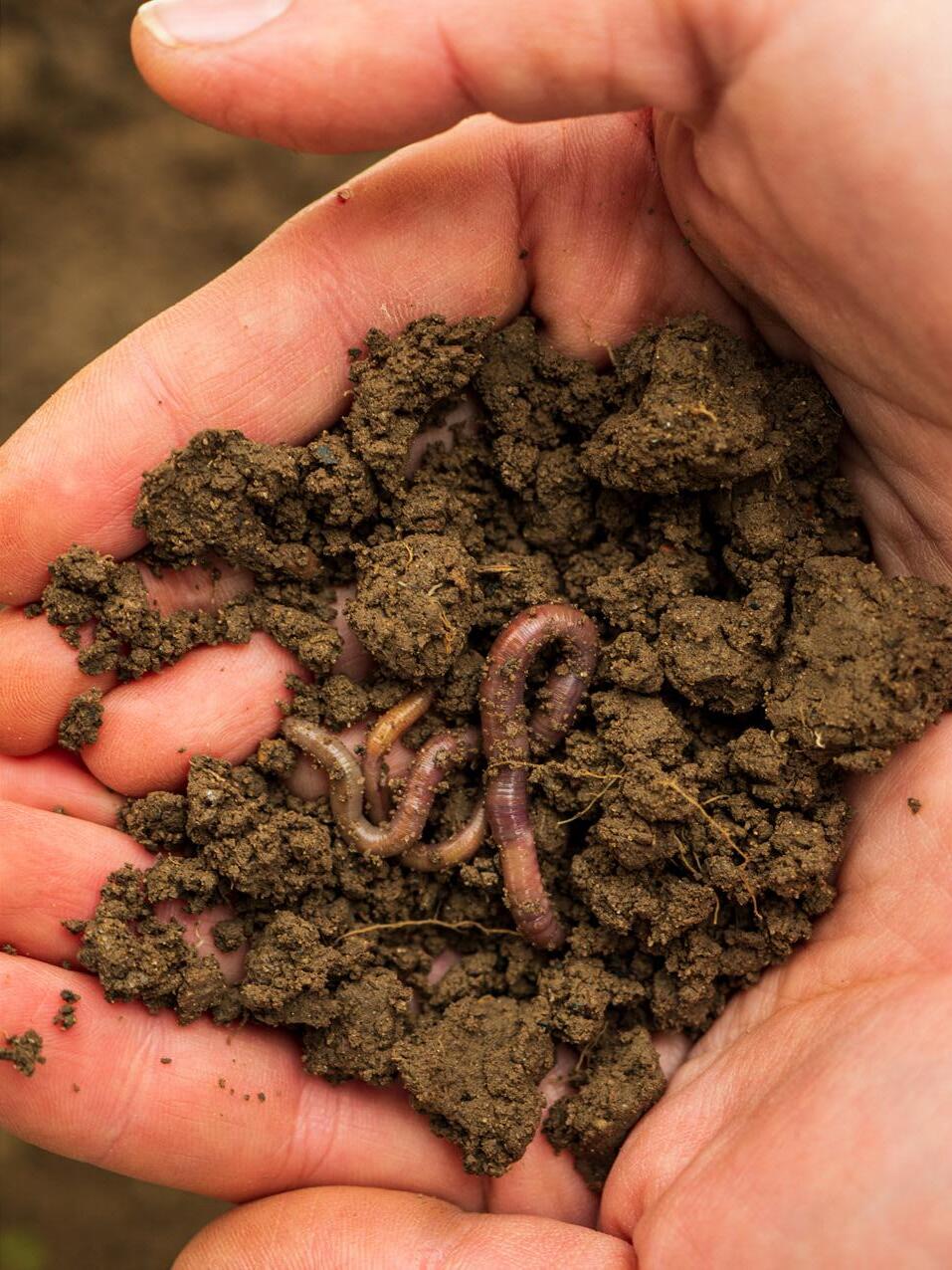
Biological soil health and functioning.
Determining biological soil health and functioning is crucial for promoting sustainable land management and it can help identify specific fields that might benefit from improving the soil’s biological component. This can be done by several methods which vary in applicability and accessibility, depending on soil type, location, climate and resources. These methods include earthworm counts, monitoring the breakdown of plant residues, and the level of biological
Earthworms are a good indicator of soil health as their numbers are influenced by pH, drought or waterlogging, compaction, tillage, crop rotation and management of
The best time to count worms is in spring or autumn, preferably when it is warm after rain. Be consistent in the time that you do your counts if
Monitoring for earthworms.
This can be done with a quick visual assessment by looking in your soil pit for earthworms and their burrows. A more detailed test is set out below. You will need:
▷ Spade
▷ Container for earthworms
▷ Water
▷ Sample tray
▷ Earthworm identification guide
▷ Recording sheet
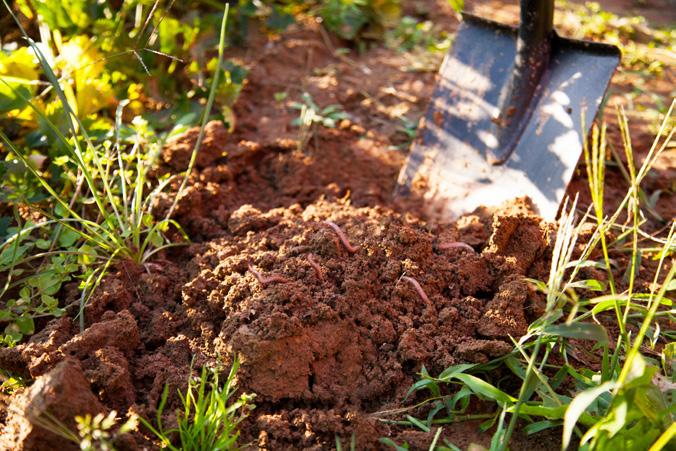
1. Dig out a soil pit 20cm square by 20 cm deep and place soil in the tray
2. Sort the soil, placing each whole earthworm into the container
3. Count and record the total number of earthworms
4. Separate earthworms into adults and juveniles
5. Return juveniles into the soil pit
6. Count and record each type of adult earthworm
7. Return earthworms to the soil pit and backfill with soil
8. Repeat for each soil pit
Adult earthworms have a clearly developed saddle (reproductive ring), and juveniles do not. You may need to rinse worms with water to determine if a saddle is present. Size is not a good indicator of maturity as adult earthworms typically range in size from 2 cm to 15 cm, depending on species.
The most significant benefits to crop productivity are more likely in fields where numbers of earthworms are high.
Plant Your Pants! An Open Farm Sunday initiative.
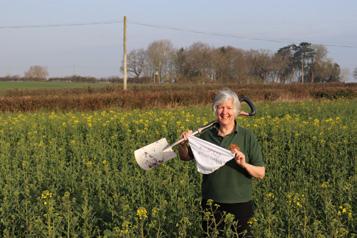
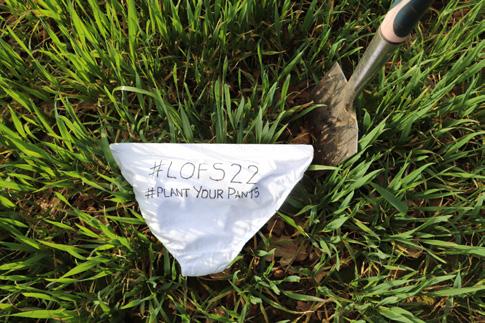
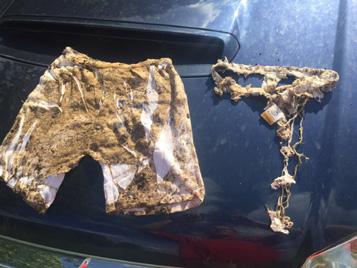
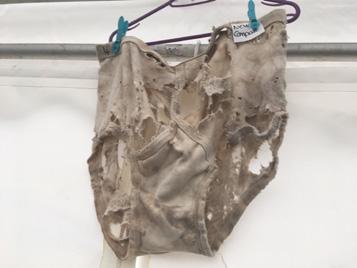
Decomposition rate.
Faster decomposition of plant residues suggests a more active and diverse microbial community. Look for signs of partially decomposed plant materials in your soil. A healthy soil will have a mixture of intact and partially decomposed organic matter, indicating ongoing microbial activity. Another useful method to understand the decomposition rate is to bury a mesh bag with plant material (e.g., straw, leaves) in your soil. Dig it up periodically and monitor the rate of breakdown. Faster disappearance indicates more active microbes. As a fun alternative to mesh bags, LEAF’s Open Farm Sunday demonstrated the effects of a healthy soil with their ‘Plant your Pants’ initiative to monitor microbial activity.
Soil biodiversity.
Look for signs of diverse soil animals, including beetles, spiders, and millipedes. Finding predators like centipedes and some spiders indicates a balanced food web with healthy prey populations. Channels and small holes in the soil are created by earthworms and other burrowing organisms, indicating healthy soil structure and active decomposition. The abundance of soil organisms will vary according to the time of year.
Soil smell.
A pleasant, earthy odour indicates a healthy and active soil ecosystem, dominated by aerobic bacteria and fungi. Conversely, an unpleasant smell might suggest anaerobic conditions or organic matter buildup. For example, a rotten egg smell usually indicates anaerobic conditions and can often be found in waterlogged soils and an ammonia-like smell, indicates rapid decomposition of organic matter.
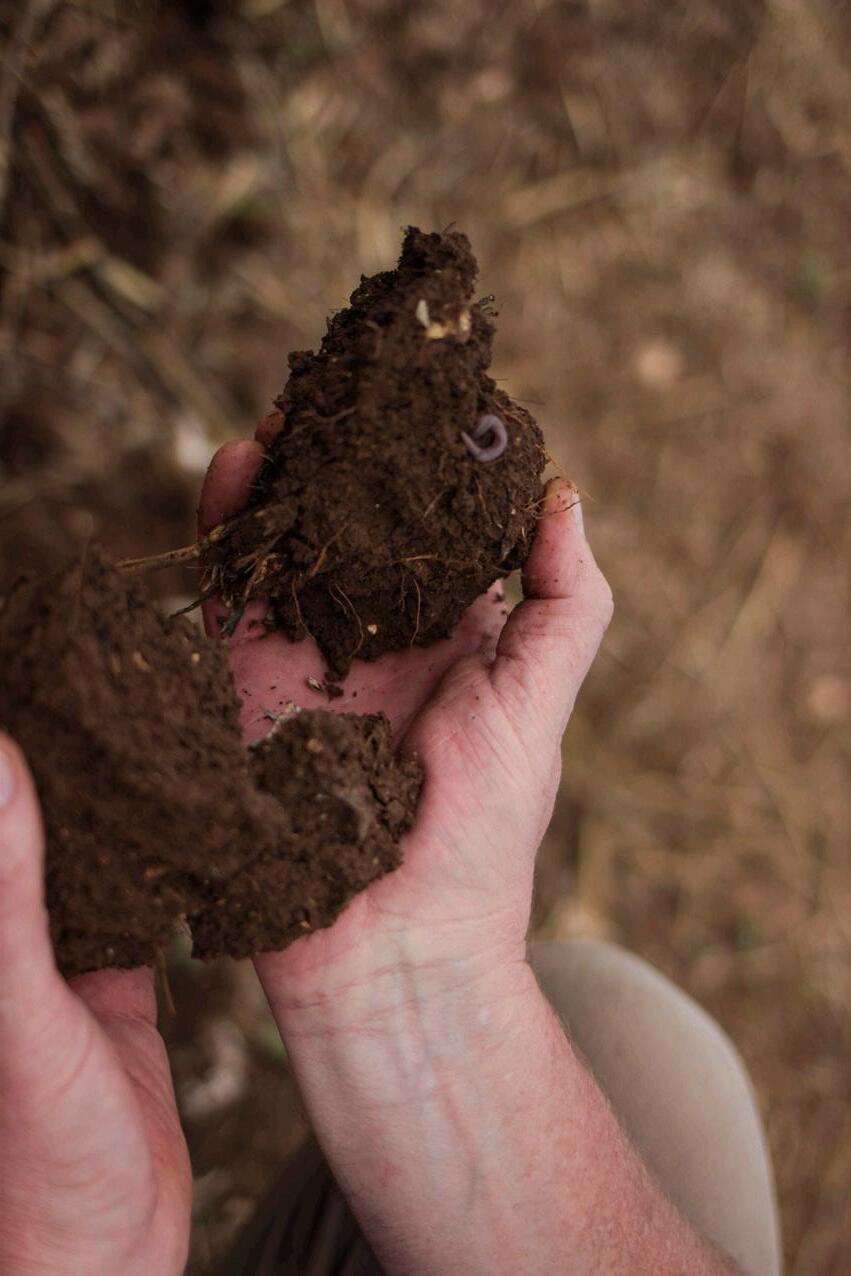

Recommendations to enhance soil biological health.
Avoid physical disturbance:
Excessive tillage and/or grazing damages the biological integrity of the soil ecosystem. Impact can be reduced by minimising tillage practices, reduction of machinery compaction, and avoiding overgrazing.
Organic amendments:
Application of organic matter, such as manure and compost, provides a food source for beneficial soil organisms.
Maintaining living roots:
Ensure living roots are kept within the soil for as much of the year as possible. This helps to retain nutrients, improve plant growth and microbe biodiversity. Plants which are left in place for longer grow deeper roots which encourages the build-up of organic matter. The excretion of polysaccharides from root exudates acts like glue to hold soil together, which provides energy for soil organisms.
Cover crops:
Planting cover crops supports a diverse population of soil organisms and, when decomposed, provides additional organic matter.
Case study. Lockerley Estate & Preston Farms.
Lockerley Estate and Preston Farms make up 1,970 hectares of land near Stockbridge, Hampshire. They are mixed farms with arable crops including winter and spring wheat, oilseed rape (OSR), barley, oats, peas, and beans, alongside livestock - cattle and sheep, a working forestry enterprise and a large stewardship commitment.
Since 2016, Craig Livingstone (Farm Manager) has incorporated more integrated and sustainable farming practices on the Estate, which continue to build more healthy and resilient soils and enhance
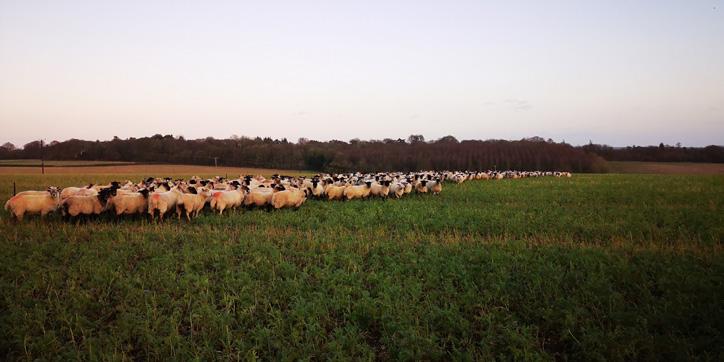
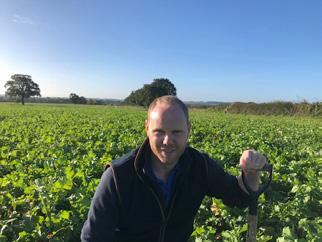
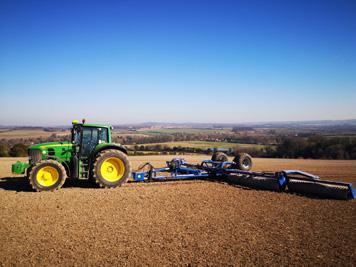
Craig Livingstone, Farm Manager.
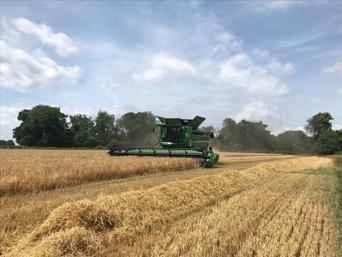
Beginning their journey to enhanced soil health.
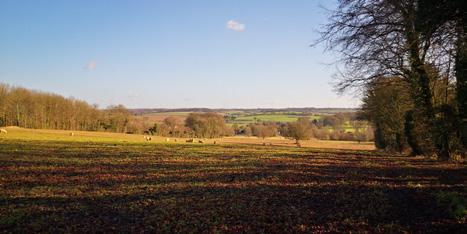
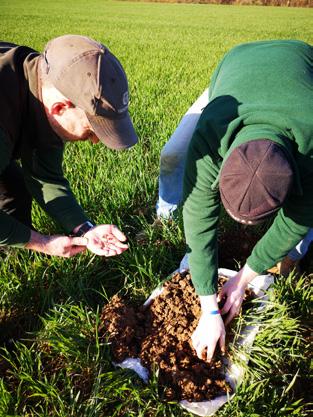
Lockerley Estate’s journey towards improving soil health began after a challenging experience in 2017. The farm used a large crawler tractor and cultivator to establish stubble turnips and then incorrectly over-grazed sheep on wet soils. As a result, the soil became too wet to work in the spring and when the team finally managed to re-cultivate, they’d lost all the moisture, going from waterlogged to drought-like conditions in just ten days. This experience highlighted the need for change - recognising that the farm couldn’t continue with these methods.
The growing interest in regenerative agriculture, fuelled by the wealth of information available through books, podcasts, and online resources, encouraged Craig to explore alternative methods. Participation in courses such as the “Regen Ag 101” and Dr Elain Ingham’s soil food web programme solidified the importance of investing time and energy into improving soil health, crop quality, and financial sustainability.
Implementing strategic changes to improve soil biology.
Grazing management: Initially, sheep were introduced to graze on arable land, with the grazing strategy evolving to reduce poaching on heavy land and manage stock movement more efficiently. Lambs graze heavier soils, whilst managing tupping ewes are moved to lighter land. 10 way cover crops are used alongside catch crops where they fit in the rotation.
Cultivation adjustments: Existing machines were simply shallowed, or metal was modified from wings to points and deep to shallow depth to minimise soil disturbance. The rotation was extended to incorporate more diverse and lower-input crops, enhancing species diversity and maximising net margin.
Adopting new practices and equipment: The farm utilised government grants to purchase a direct drill after six years of transitioning with existing equipment. A low disturbance subsoiler and straw rake were also added to the equipment fleet along with a liquid tank for biological extract from compost. While some tractors and heavy cultivation tools were sold, the farm remains flexible, retaining a plough and cultivator to respond to varying conditions, doing the right thing at the right time.
Biological enhancements: The farm began producing and applying biologically complete compost and Johnson-Su compost at planting. Additionally, they began using tissue and sap testing to balance foliar nutrition and crop health with the overall goal of reducing reliance on inorganic inputs. The focus is on farming pragmatically, rather than adhering rigidly to any one system.
Case study: Lockerley Estate.
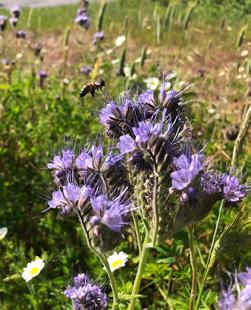
Committing to continuous improvement.
To track progress, the estate has established five soil monitoring stations spread across its 11 different soil types. These stations use the Solvita test to monitor a wide range of soil health indicators. The farm collaborates with Soil Biolab to analyse soil and compost extracts, ensuring they are biologically complete.
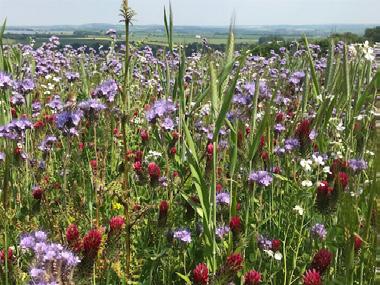
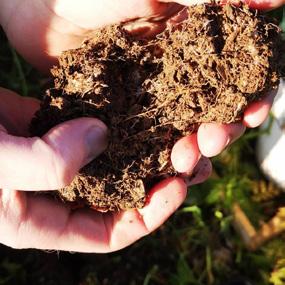
Regular water infiltration tests, cover crop biomass, and soil monitoring, along with slake tests and soil health scorecards, also provide valuable insights. Looking forward and given the farm's higher pH soils, bacterial dominance is managed by applying protozoa teas to promote efficient nitrogen cycling, a process informally known as the "poop loop."
Through a combination of careful monitoring, innovative practices, and a commitment to flexibility and learning, Lockerley Estate has made significant strides in improving its soil health. The changes have enhanced the biological activity within the soil, reduced reliance on chemical inputs, and created a more resilient and sustainable farming system.
Further information.
Integrated Farm Management, LEAF, https://leaf.eco/farming/ifm
Soil structure and its benefits: An evidence synthesis, The Royal Society, https://royalsociety.org/-/media/policy/projects/soilstructures/soil-structure-evidence-synthesis-report.pdf
Nutrient Management Guide (RB209), AHDB, https://ahdb.org.uk/ RB209
Improving Soils for Better Returns, AHDB, https://ahdb.org.uk/ knowledge-library/improving-soils-for-better-returns
AHDB Soil health score card, AHDB, https://ahdb.org.uk/knowledgelibrary/the-soil-health-scorecard
The Rodale Institute resources, Rodale Institute, https://rodaleinstitute. org
Visual Soil Assessment Guide, Väderstad & SMI, https://www. vaderstad.com/uk/know-how/basic-agronomy/soil-analysis-andprotection/your-guide-to-visual-soil-assessments/
Field drainage: The importance of soil health, AHDB, https://ahdb.org. uk/knowledge-library/field-drainage-the-importance-of-soil-health
Monitoring Soil Carbon: a Practical Field, Farm and Lab Guide, Farm Carbon Toolkit https://farmcarbontoolkit.org.uk/2021/11/11/new-guideon-monitoring-soil-carbon/
LandIS: the Land Information System, Cranfield University, https:// www.landis.org.uk
FAO/UNESCO Soil map of the world, Food and Agriculture
Organisation of the United Nations, https://www.fao.org/soils-portal/ data-hub/soil-maps-and-databases/faounesco-soil-map-of-the-world/ en/
Soil Health Institute resources, Soil Health Institute, https:// soilhealthinstitute.org/
How hungry is your soil? Open Farm Sunday, LEAF https://leaf.eco/ news-and-events/news/plant-your-pants
Cotton Strip Soil Test: Rapid Assessment of soil microbial activity and diversity in the field, South Dakota State University, https://extension. sdstate.edu/cotton-strip-soil-test-rapid-assessment-soil-microbialactivity-and-diversity-field
Soil microorganisms – fungi and bacteria, AHDB, https://ahdb.org.uk/ knowledge-library/soil-microorganisms-fungi-and-bacteria

This guidebook is kindly supported by Waitrose & Partners, as part of the Farming For Nature programme.

